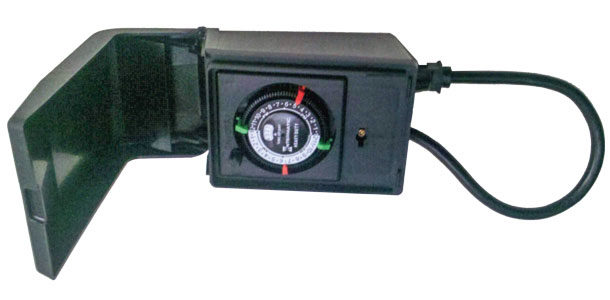Dairies know routine maintenance is critical to keeping the farm running properly, but not everyone knows the impact maintenance activities have on energy use.Many dairies are needlessly wasting money by overlooking simple maintenance activities and other low-cost options that save energy.
Here are some of the most common quick fixes dairies can implement to reduce their energy costs without breaking the bank.
Exterior light photocells
When a photocell on an exterior light fails, the light defaults to running constantly. This increases the run hours of a light from approximately 12 hours per day to 24 hours per day, thus doubling the energy use of the light.
Since the light is now running twice as long, the bulb and fixture will burn out in half the time. Although photocells may be in difficult areas to reach, replacing them will be much less expensive than letting the broken light continue to run unnecessarily. Time to get out that ladder and see if you can start saving some money.
As an example, a 1,000-watt high-pressure sodium fixture with a broken photocell uses approximately 9,636 kilowatt hours annually. At $0.10 per kwh, this fixture is causing the farm to waste $482 annually compared to a functioning photocell.
Fans
Fan maintenance can have dramatic effects on the performance and energy use of fans. The airflow of dirty fans can be 20 to 50 percent less than the airflow of a clean fan, which means less air is being delivered while using the same amount of electricity.
Consider creating a monthly fan cleaning schedule to ensure your fans are always delivering the maximum airflow, both saving you energy and keeping your cows comfortable and high-producing. Other fan maintenance activities include:
- Properly tensioning pulleys
- Replacing worn belts and pulleys
- Ensuring shutters operate properly
- Cleaning fan blades, fan housing and shutters
- Removing airflow obstructions near the fan discharge
Refrigeration
Refrigeration is one of the main energy uses on a dairy, so proper maintenance can significantly reduce wasted energy. If a refrigeration system is not properly maintained, then it will run longer to cool milk than a properly maintained system.
This both increases energy use of the system and increases the time needed to cool the milk. Here are some common maintenance tips that will help minimize the energy use of your refrigeration system:
- Clean condenser coils monthly to remove dust and debris
- Clean motor and fan blades monthly
- Lubricate motors and bearings
- Hire a refrigeration technician twice a year to check refrigeration levels, thermostat settings and relays and contactors
- Insulate suction lines
Cleaning refrigeration condensers can reduce refrigeration energy use by 5 percent. If a farm uses 40,000 kwh annually at a cost of $0.10 per kwh to cool milk, then that farm could save $200 a year by keeping the condenser clean.
Engine block heaters
If your dairy is located in a cold climate, then you could easily be wasting energy each winter through your engine-block heaters for tractors and skid steers.
Standard engine-block heaters are 1,100 to 1,500 watts, and a farm may have several engine-block heaters running. Installing a timer for the engine-block heater can reduce engine-block heater energy use by 75 percent.
Typical run time for an engine-block heater is 12 hours per day during winter. Installing a timer reduces the run hours to approximately three hours per day.
You can find a heavy-duty engine-block heater timer at your local hardware store for about $25, and it can save you upward of $100 per year for each timer, depending on your local electricity costs. If your dairy has a lot of diesel vehicles, the savings can add up quickly.
For example, two tractors with 1,500-watt engine-block heaters plugged in 12 hours per day for 20 weeks per year use approximately 5,040 kwh annually. At $0.10 per kwh, an engine-block heater timer that reduces the engine-block heater use to three hours per day would save about $378 annually.
Paying attention to these areas will reduce your dairyâs energy costs without spending much time or money â a great first step toward making your dairy more energy-efficient and cutting some of your production costs. If youâre still hunting around for ways to cut energy costs, consider investing in a full farm energy audit to identify more significant opportunities to save energy.
Energy efficiency recommendations such as replacing lighting, adding variable-speed drives and switching to an energy-efficient compressor will cost a bit more up front, but they can still end up paying for themselves in just a few years. Until then, keep working on your maintenance checklist. Every little bit helps. PD

-
Kyle Booth
- Engineering Team Lead
- EnSave
- Email Kyle Booth











